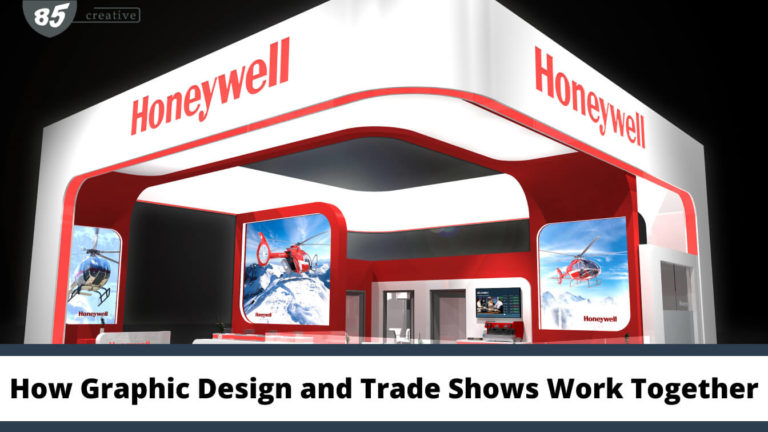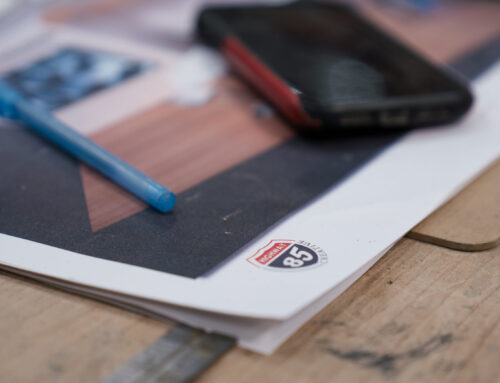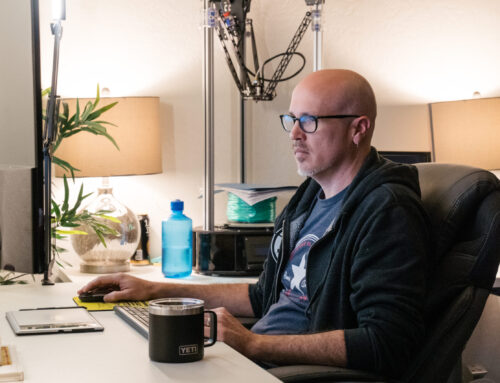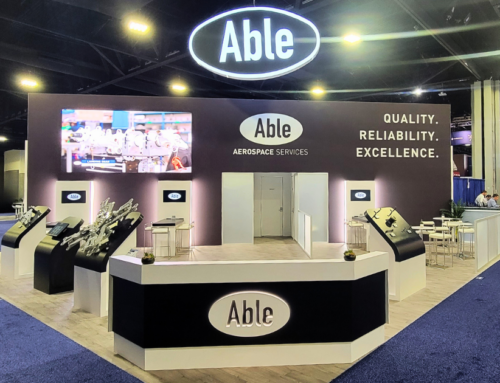Take a look at your last trade show display. How much time and effort did you put into your graphics and graphic design? Did you have clear, stunning graphics to draw people to your booth? Graphics are critical to a good trade show experience, so it’s essential that yours are picture perfect.
When it comes down to it, graphics can make or break your trade show display. High resolution, eye-catching graphics can captivate attendees and draw people to your booth. Simply put, graphics are a crucial piece of your overall trade show booth design.
In this article, learn about the connection between trade shows and graphic design. Also, gather an understanding of how to create the perfect graphics for your next trade show, so that your booth can stand out among your competition.
Trade Shows and Graphic Design: What’s the Connection?
Graphic design is the backbone of any great trade show booth design. Through the use of graphics, you can present your logo and brand identity, display featured products, and present messaging to attendees visually.
In addition, trade show graphics can help showcase your brand’s personality. Your brand personality should include the human characteristics that help your brand resonate with attendees. This brand personality will then dictate the colors, fonts, lighting, and other interactive elements you incorporate into your trade show graphics.
Designing Your Trade Show Graphics
When it comes time to design your own trade show graphics, start by determining your goals and the message you want to deliver to attendees. Once you know your overarching goals, the details are really what will make your graphics stand out.
Designing graphics does take some time, but we’re here to help. We’ll break down some of the most important graphic design elements to pay attention to, and explain how they relate back to trade shows and your booth.
Color Scheme
Choosing the color scheme for your trade show graphics is a very important step. The colors you select should reflect your brand while complimenting the message that you want to send to attendees.
While your color scheme should not be too over the top, it should still be bright enough to stand out. Create a color scheme that is bright, captivating, and harmonious. The color scheme can set the mood for your booth experience, so choose wisely.
Imagery
Imagery is a crucial piece of your trade show graphics. Graphics are visual in nature, so the images you choose to present are very important.
Your imagery should be clear and easy to understand. Use bold images that communicate your message. These images should be able to convey your message, even when standing alone without copy.
To capitalize on the visual nature of graphics, try to incorporate charts, infographics, and illustrations. This will help to make your booth more visually appealing to those passing by and will captivate more attention than just standard images alone.
Composition
Composition is important to any design, so keep the composition of your graphics in mind as you create your designs. The most important composition components to pay attention to are contrast and visual hierarchy.
With any graphic, there should be some contrast throughout the design. Contrast is what creates a strong effect for viewers. In addition, you can use contrast to develop a focal point that captures attendees’ attention and draws them to your most important message.
Alongside contrast, make sure you incorporate visual hierarchy throughout your designs. A hierarchy allows you to emphasize more important items in a design. For example, your logo should be bigger and higher on the hierarchy than other less important elements in your design.
Lighting
A well-lit booth is essential to make sure that people can see your graphics clearly. There are some basic types of lighting that you must include just so people can actually see, but there are also some ways you can get creative with lighting choices.
Backlighting can help to highlight graphics, while lighting the overall space. Overhead lighting can also be a great choice, especially if you would like to brighten key areas. Finally, accent lighting can also draw attention to certain important areas.
The lighting options you choose completely depend on your preferences and the overall mood you are trying to create within your booth.
Messaging
There are many factors that go into determining the messaging and copy you include in your graphics. While trade show graphics are typically very visual in nature, you still need some messaging to compliment your visual elements and imagery.
Make sure you keep the rules of billboard readability in mind. When it comes to these rules, the most important thing is to keep copy to ten words or less. This will help to avoid oversaturating your graphics with messaging and overwhelming attendees.
There is not that much room for copy on your trade show booth, so think of any messaging you include as an “elevator pitch” of sorts. All messaging should be focused on your prospects and drawing them to your booth.
Your messaging should also capture your brand personality! Your tone of voice should reflect that personality. pay special attention to your fonts and place any accented font wherever necessary.
Placement
The placement of your trade show graphics is definitely very important! When deciding where to place your graphics, look at the purpose and size of each. In general, graphics can be divided into three categories: long-range graphics, mid-range graphics, and short-range graphics.
Long-range graphics include those that can be viewed from 100 feet away or further. These graphics should include things like general brand identification, including your logo or featured product.
Mid-range graphics should be able to be viewed from 10 to 15 feet away. These graphics should be used to further identify your brand, with some more detail than your long-range graphics.
Finally, short-range graphics should be designed to be viewed from 1 to 10 feet away at eye level. These graphics should include much more detail and messaging, because they are designed to be viewed up close at a personal level.
Whether part of your long, mid, or short range graphics it’s important to note that for readability any text on your display should never be lower than 42” high.
Material
Choose the material that your graphics are displayed on wisely. Innovations in graphic design have created many material options for you to choose from, each with different capabilities.
Laminate and vinyl materials are glossy, bright, and sleek. They are best for bold messages on short-range graphics.
Fabric materials can capture vivid details. When you print a design on fabric, you are able to be very detail-oriented and take your graphics to the next level. Fabric designs are best viewed from farther distances.
Tension fabrics are another great option for your trade show graphics. These fabrics are intended to stretch. They are malleable and easily manipulated, more so than any other material. This gives you a lot of flexibility when designing your trade show booth.
The material you choose for each graphic depends on your goals for that specific graphic. Don’t hesitate to try out different materials for your different graphics.
Takeaways
Graphic design is obviously a critical piece to a successful trade show experience. If you want your booth to stand out and draw attendees’ attention, you need to take some time to design the perfect graphics.
Keep these final tips in mind when designing graphics for your next trade show:
- Graphics and graphic design are an opportunity to display your brand personality for attendees. Your brand should be evident within the design elements you select, so that your personality shines through.
- Having high quality and high resolution graphics is incredibly important to making your display look professional. If you want to gain the respect and attention of those passing by, make sure your graphics are of the highest quality possible.
- While graphic design tends to be highly visual in nature, the messaging you choose to include is still very important. Any text you include should be thought of as an “elevator pitch,” or a quick opportunity to gather attendees’ attention and convince them to do business with your company.
- Graphics give you the power to create a mood within your trade show booth. Choose your design elements wisely, especially those like color scheme and lighting, to create a mood that represents your brand well.
Hopefully you now understand the importance of graphic design in the trade show setting, and got some inspiration for your next trade show graphics! Get creative and follow our tips to have flawless graphic design within your next trade show booth.




